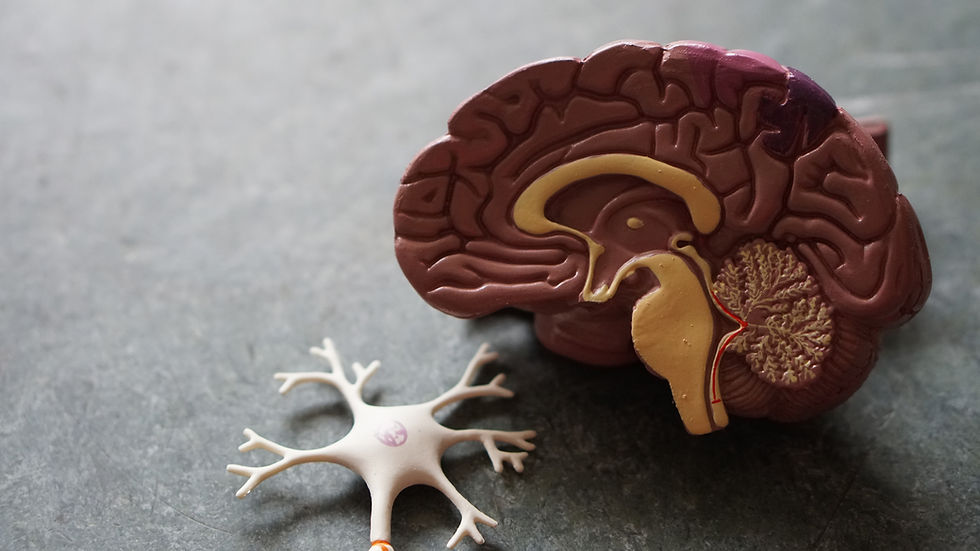New Cell Types Identified in Parkinson’s
- Jud Eson
- Apr 2, 2024
- 2 min read
There is new exciting research that shows what is happening to the cells in your brain when you have PD. Most people know that dopamine is impacted, and maybe you know that the substantia nigra is responsible for most of the dopamine production. It has been known for years that neurons that produce dopamine in the substantia nigra die in those with Parkinson's. Up until recently, it wasn't clear if other cells were also affected.

A new study was able to identify a new neuron that is associated with PD. Researches were able to develop an "atlas of gene expression" by looking at countless different cells within the substantia nigra. This is a major advancement towards research around treatments.
Scientists identified a group of neurons that had an activated gene called RIT2, which has been shown to be associated with PD risk in the past. However, these cells did have have the same markers of other cell type within the substantia nigra, leading researchers to believe that it may be a newly recognized cell population. When looking at people with advanced Parkinson's, RIT2 expression was decreased, further indicating that RIT2 may play a role in the development of PD.
The researchers created an atlas of different populations of single cells in the substantia nigra. They believe this can be used to explain the changes that are associated with Parkinson's Disease. The team of researchers were able to identify pathways of cell-to-cell communication that were altered in Parkinson's. The cell-to-cell communication is what helps our body adapt to new environments and helps us fine tune our function.

This new discovery is expected to help push our advancements towards treatment for Parkinson's forward. They believe that their atlas of genes will help demonstrate what makes a neuron more resilient, gain a deeper understanding of the pathogenic mechanisms of Parkinson's (the science behind PD), and help find clinical biomarkers for Parkinson's. Biomarker's are expected to help people receive a diagnosis much fast. It is also expected to help track the progression of Parkinson's. At this point in time, there is no single biomarker for PD.
In summary, there is a unique group of neurons in the substantia nigra that is called RIT2. Past studies have shown that it is associated with the risk of Parkinson's. RIT2 was shown to be reduced in people with advanced PD, indicating it plays a role in the development of Parkinson's disease. The atlas of gene expression is able to identify a broad range of gene expression patters within the substantia nigra, hopefully leading to future treatment and diagnosis breakthroughs.
Sources:
